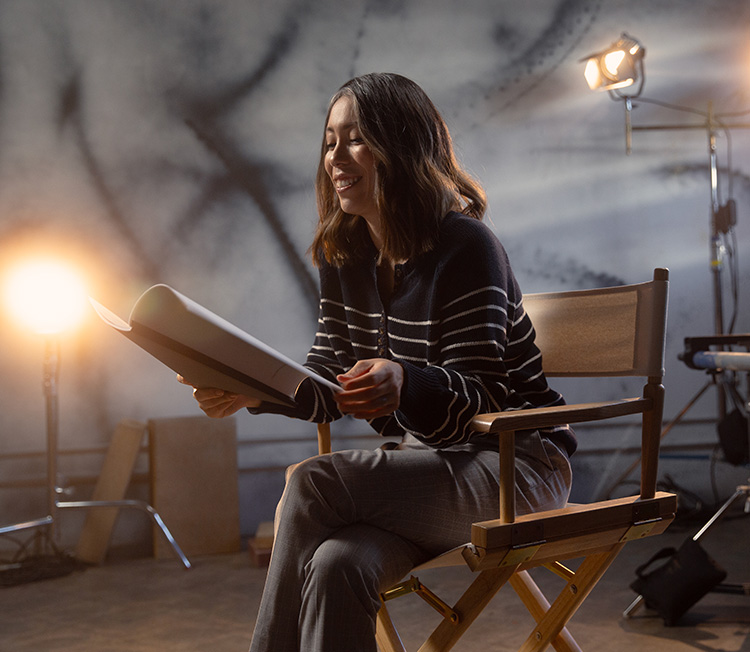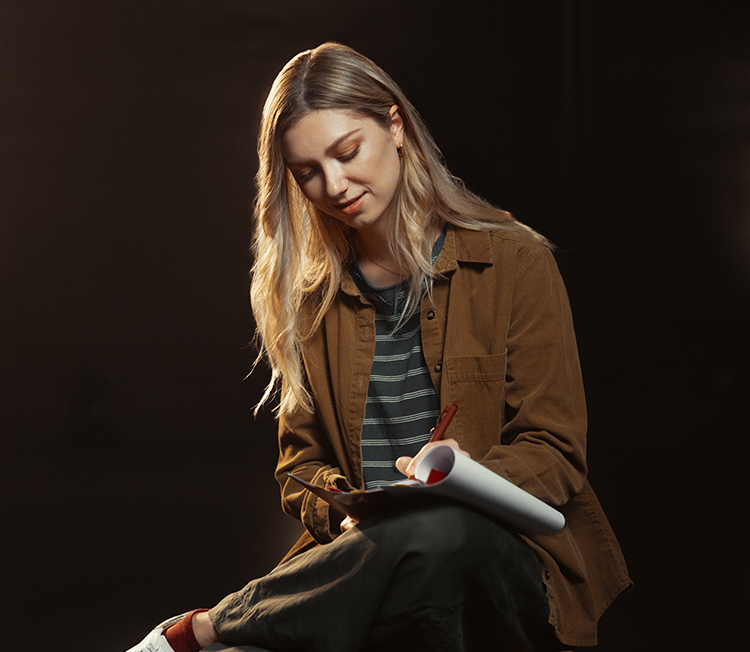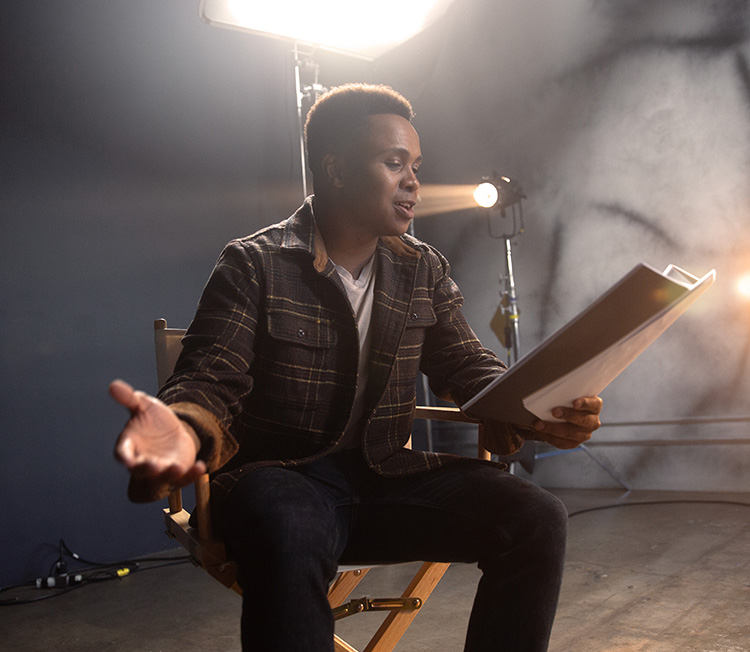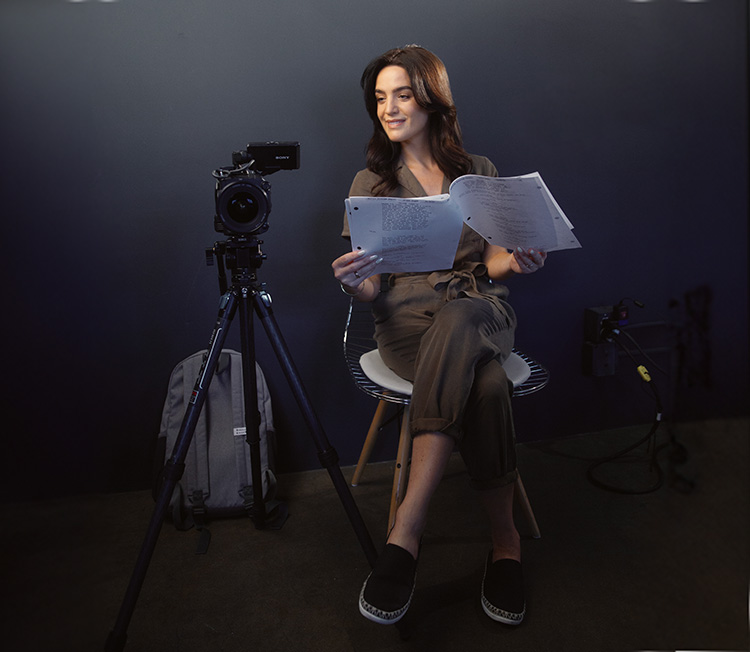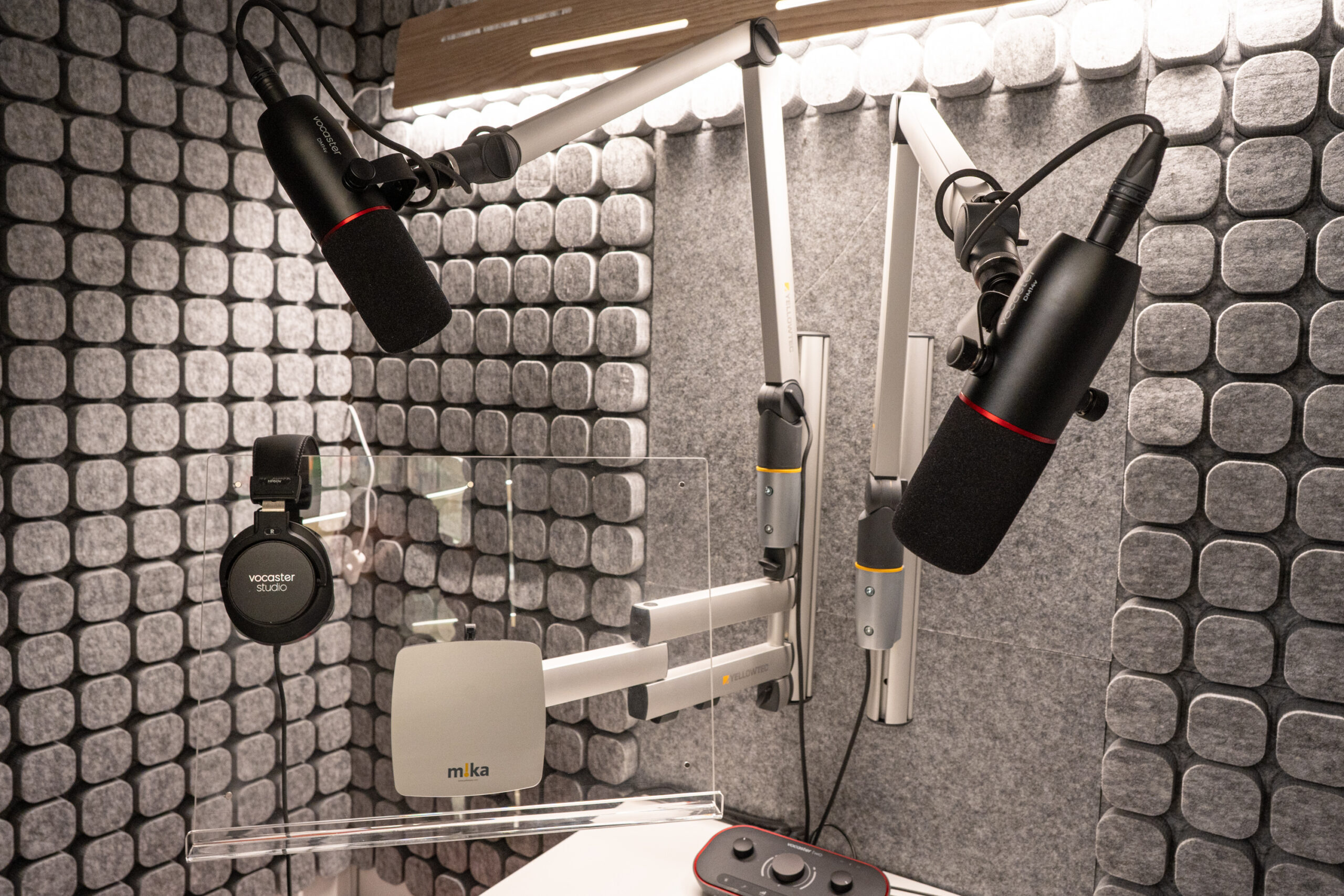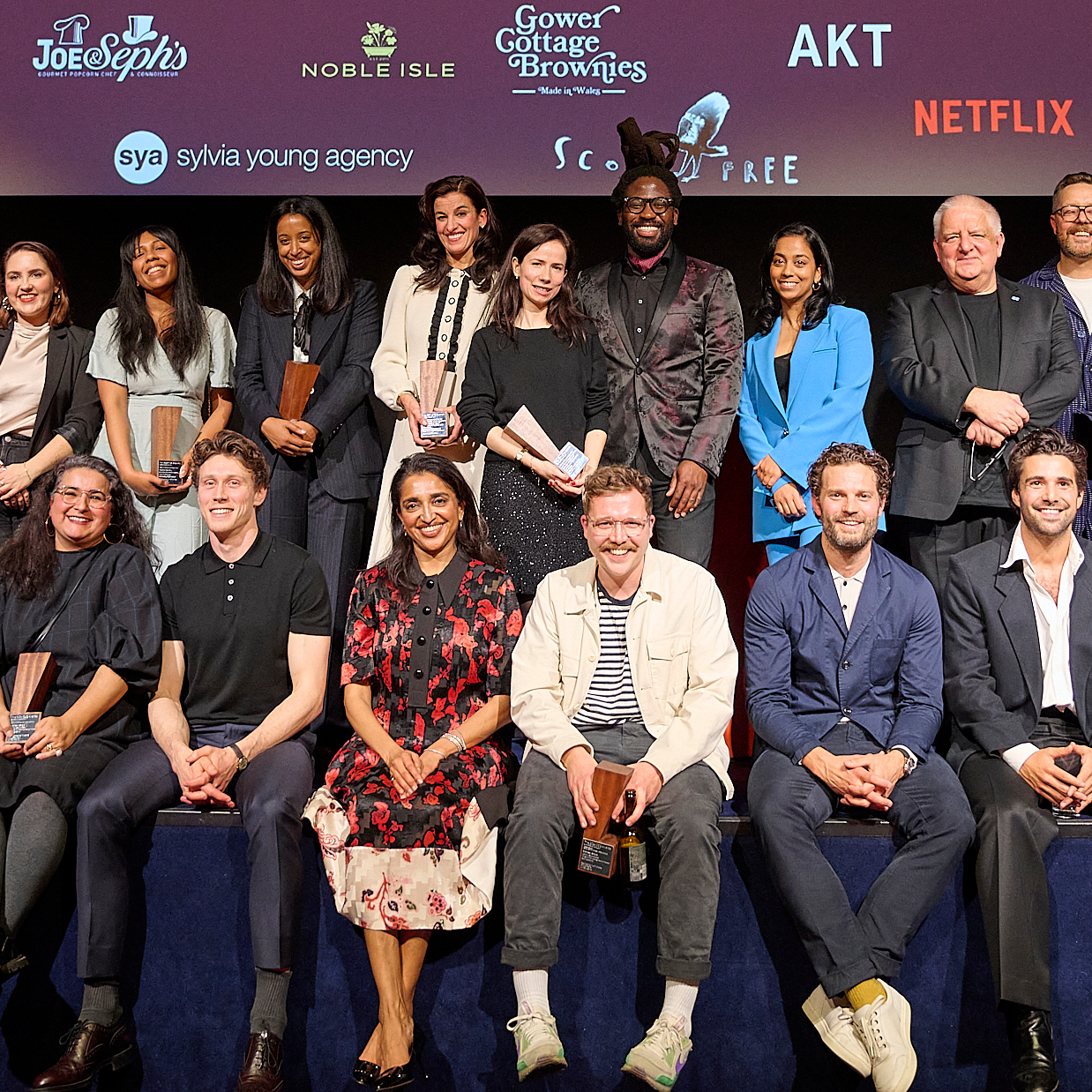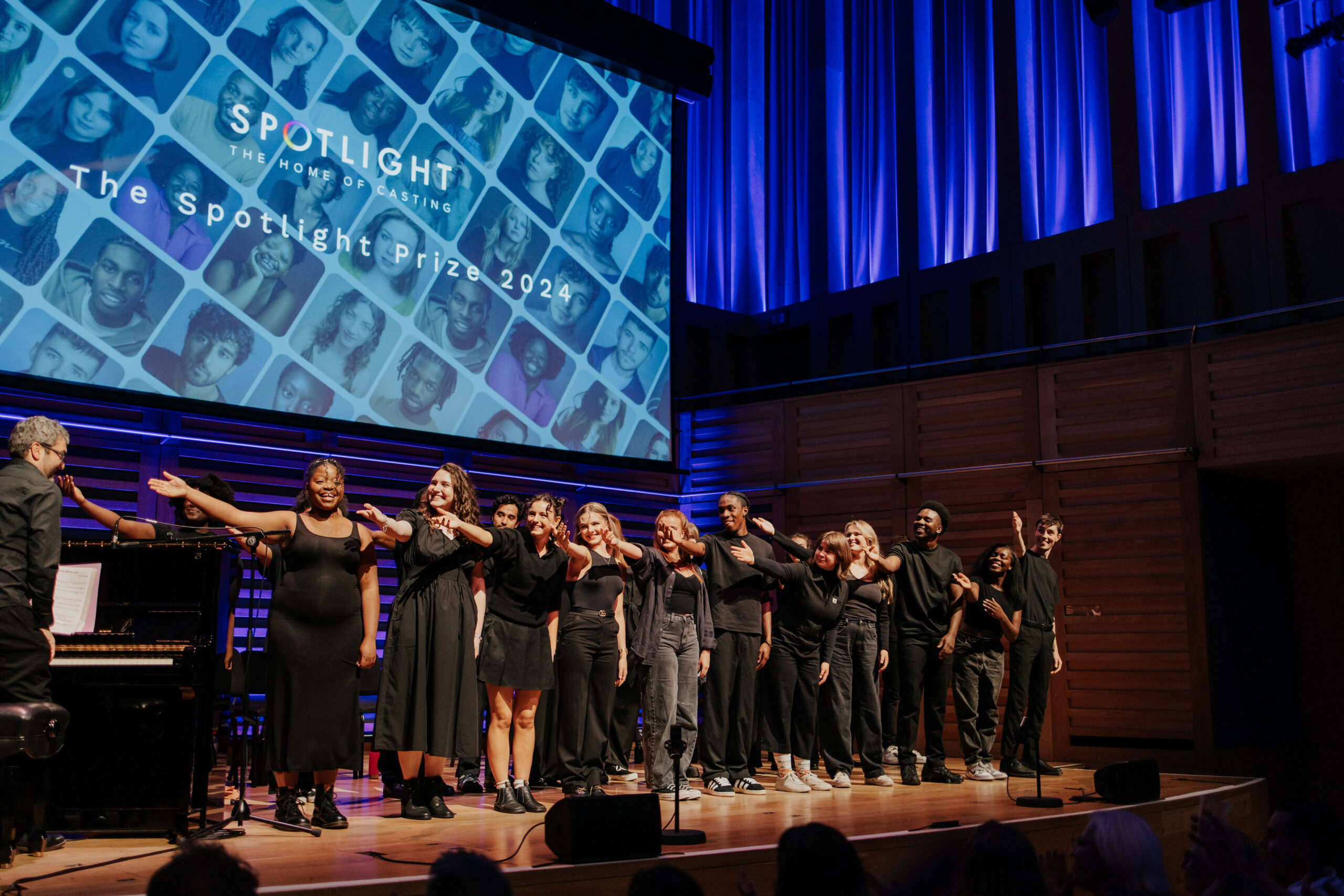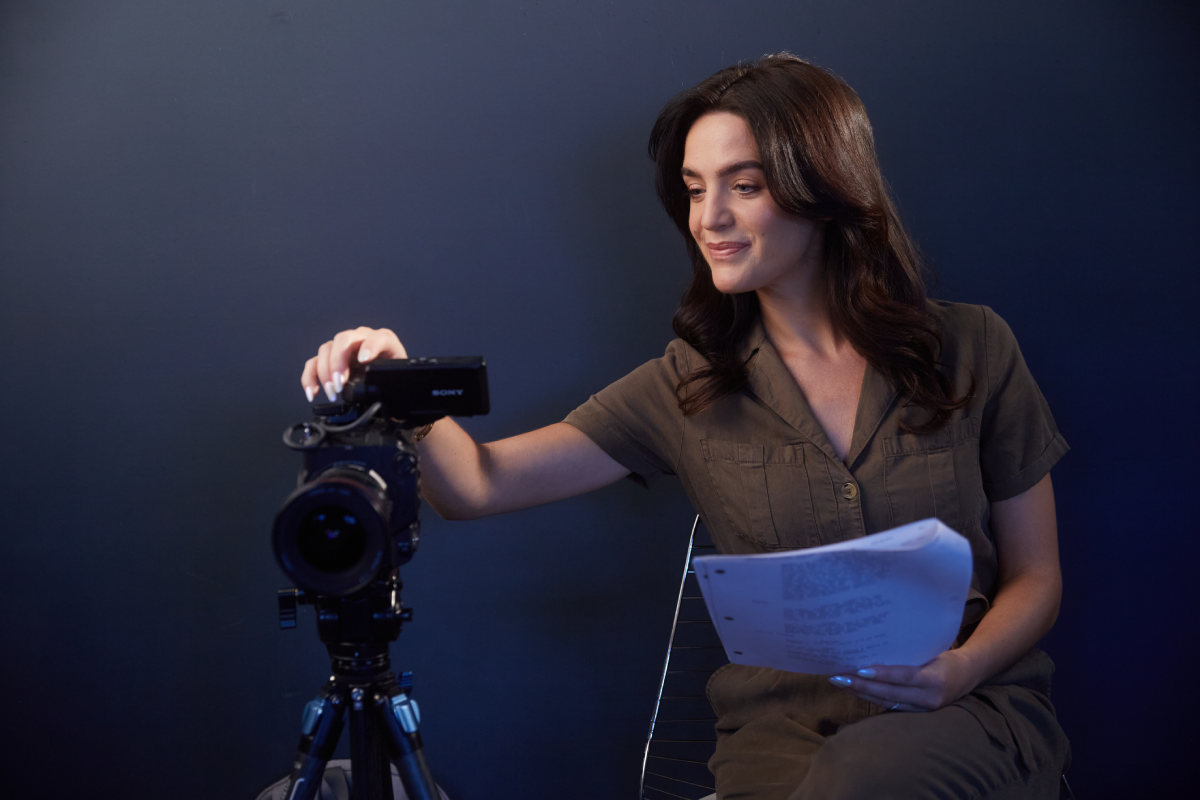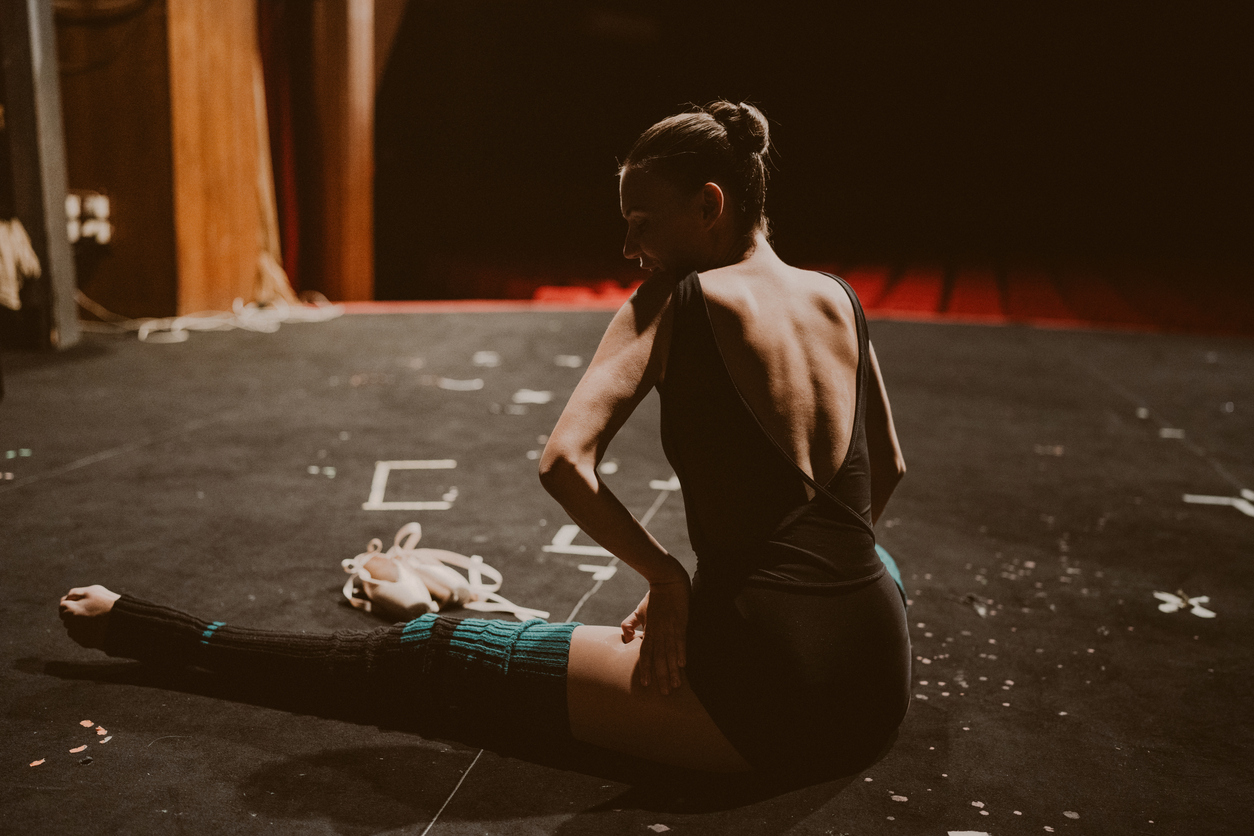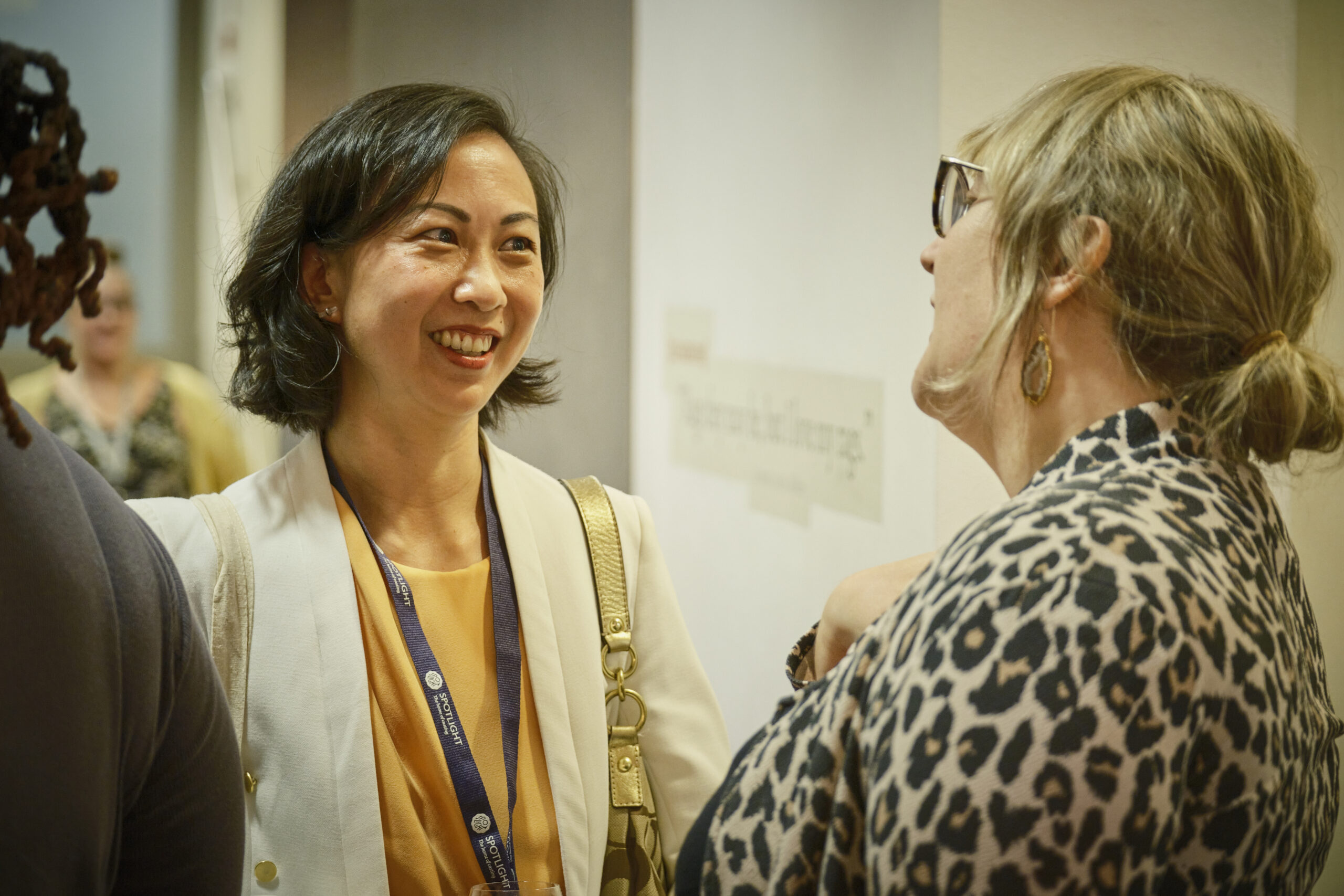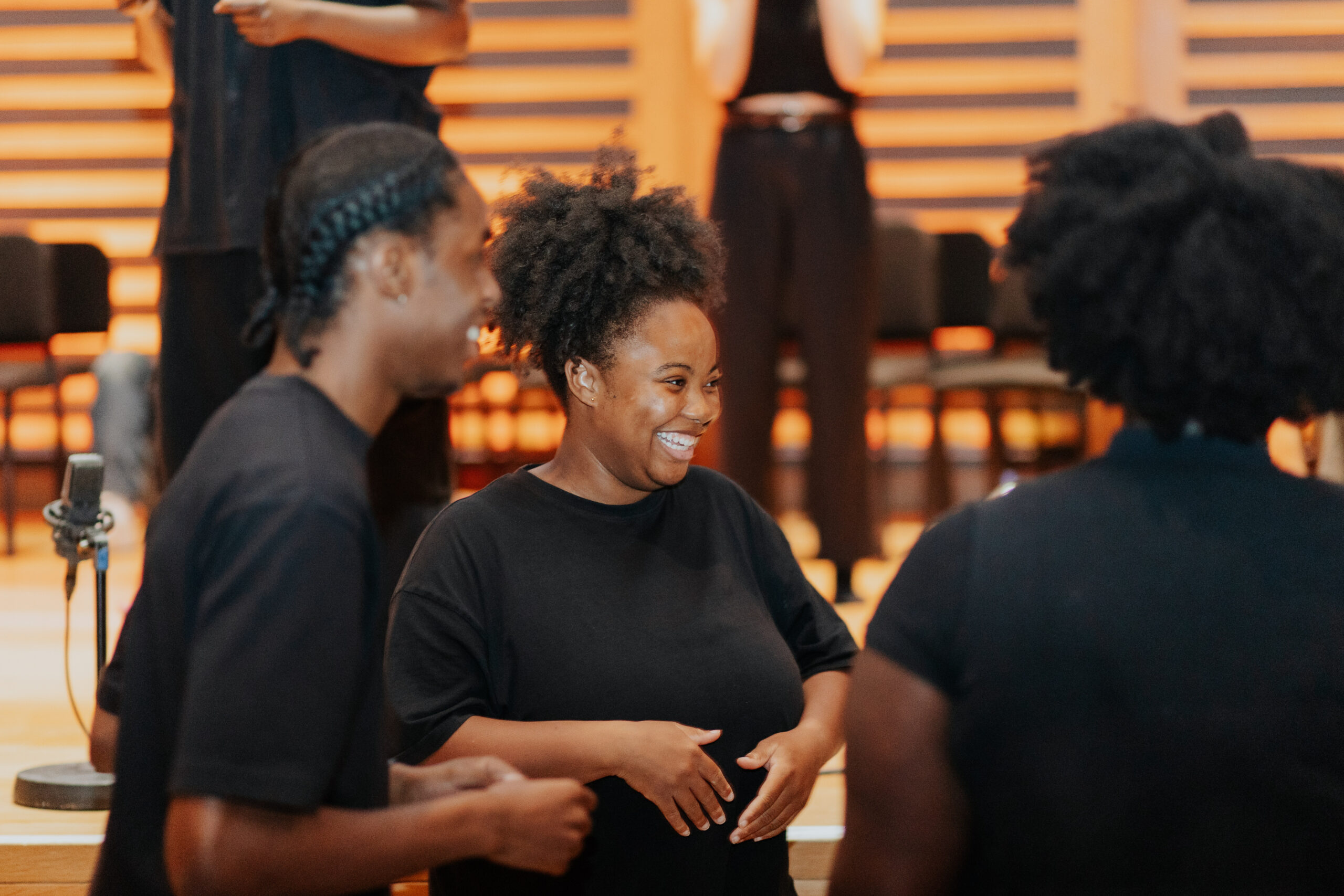Injury prevention consultant, Tome Levi, joins us to discuss the findings of her report that looks at the impact on performers and productions when an injury is sustained at work.
In this episode we’re joined by injury prevention consultant, Tome Levi, to talk about the stark findings revealed in the Impact of Injury report. The report highlights the prevalence of injuries sustained by performers working in film, TV and theatre, and looks at the human toll and economic impact associated with it.
Tome shares her insight into injury prevention and recommendations for what the industry can do to improve safety for performers and crew working on production and how to create safe spaces for concerns to be voiced.

Tome Levi. Headshot by Louisa Sexton
Tome started her career working as a professional dancer and conditioning coach. During that time, she witnessed countless friends and colleagues, in her words, “break themselves for the job they love” and that led her to found the Injury Prevention Consultancy. Now she works as an injury prevention consultant on productions, helping to keep performers and crew safe on set.
We sat down with Tome to discuss the key findings in the report, what can be done to challenge the operational norms of production and how the industry can create inclusive work environments and better conditions for performers to do their jobs safely.
Take a listen:
Show Notes
Transcript
Edited for clarity.
Hi, Tome. Welcome to The Spotlight Podcast. Can you tell us a bit about yourself and your background as a performer, please?
I trained as a performer at LIPA. I then moved to London, did the performer gig for a bit, and retrained in conditioning. I found myself in a space where I was advocating for performer welfare whilst still working as a performer. Over time, as I was veering more into the conditioning space, what I found was that my friends and colleagues who had booked shows, say in the West End, or film, [or] TV, were booking roles and were experiencing difficulty with certain portions of scene material that they were being asked to execute. Or they’d watch, say the principle that they were covering if it was a theatre show, struggling with a piece of material and come to me and go, “How do I work my way around this?”
Ultimately, all those years of performer advocacy took shape in the form of founding the role of injury prevention consultant (IPC) and subsequently creating the consultancy that houses that role.
I started developing the role about eight years ago in the world of theatre [when] producers bring me in to troubleshoot shows that are dealing with high injury rates. In the last few years, [I’ve] moved more into film and television, and media entertainment insurance spaces as well.
What does an average day working on a production look like for an injury prevention consultant?
It varies very much from production to production. The beautiful thing about creativity is that scene material and the way that it manifests through the performer can be very different from one production to the next. But that also means, through the risk lens, that the possibilities of what can happen with that moment are not endless, but not far off.
Mitigating risk to performers from that scene material in film, TV, and theatre is the crux of what the role that IPC does. I start off working with productions from, ideally, script stage development, looking through the risk lens at that point before they even have a cast. Then I support the production from that point onwards.
On the flip side of that, the way that I started with all this, was troubleshooting shows. I still occasionally will be brought in to do that sort of thing with productions that I haven’t worked on before [who] find themselves overwhelmed with high injury rates. That’s more of a theatre thing, I must say.
The ideal scenario, and what I am pushing more and more for every day, is to have productions recognise the benefit of preventing things before they happen, rather than putting the fire out, which you must do of course. But making sure some safeguards are put in place.
How do productions come to hire you to work as an IPC on set or stage?
I’ve been talking about this subject matter nonstop for the last eight years. The first few producers that I worked with saw the benefit of what I was doing for their projects and that then snowballed into me working with more of their productions in-house. A lot of this has been through word-of-mouth.
Performers that are, let’s say, more of a household name [and] maybe have more sway in terms of what they are asking for, work with me on one production and say, “I want this on the next job that I book because I felt the benefit of it.”
Also, a lot of performers come to me while I’m on a production saying, “I wish I’d had you on job X.” While it’s personally my goal not to hear that anymore because I want to see this role normalised, it does really shed a significant amount of light on the fact that this is something that performers shouldn’t have to ask for.
As much as eight years feels like a long time, I’m still at the early stages of this [role] becoming more and more recognised, and appreciated, and seeing the mutual benefit of prevention from the production side and the performer side.
How have prevention recommendations you’ve put forward been received by productions?
Generally very well, actually. When producers visibly take steps to curate a safe work environment, there’s a positive ripple effect to that. It sends a message from the top down that there is a recognition of the need to prevent. We see you [performers], we understand the fact that nothing happens without you being present and in a position to actually do your job. Rather than just dealing with injury when it happens, which is the cycle of reactivity that the creative industries are largely stuck in.
It’s an overwhelmingly positive response that I’ve had over the years.
Can you tell us a bit about how the Impact of Injury report came about?
It’s been a work in progress. Basically, years of advocacy, and recognising, and feeling really deeply myself that this mantra that we parrot as an industry of ‘the show must go on’ is not something that we are actually setting ourselves up to do successfully.
Oftentimes, we are not curating work environments that are inherently proactive and preventative. We are very much reactive, and then the show must go on no matter what and figure out a way to get through it. That puts a huge amount of physical and emotional pressure and stress on the people who we are totally reliant on in order to deliver the product to market.
Prior to creating the role, I felt that it was really important that it not just be my voice saying, “Anecdotally, I see this, this, and this. Therefore, I’ve decided there’s a problem.” I would like to create a platform for people to anonymously – because I totally appreciate that it’s a very difficult thing to talk about publicly as people are worried about being labelled as difficult, they’re worried about not working again, tarnishing their professional reputation – speaking their truth specifically through the lens of their experience with the subject matter. Whether it be that they have personally experienced an injury at work or that they have experienced the negative by-products, the side effects of somebody in their immediate circle at work becoming injured.
In 2021, I created a survey looking specifically at the impact of injury on theatre performers, that also looked at the challenges mirrored in the screen sector. Off the back of that, alongside a lot of other R&D components, it led me to publish a series of guidelines. A few years later, I decided it was time to look at this more broadly, looking at film, TV and theatre, and not just look at the impact of injury on performers, but at how that ripple effect manifests particularly for freelancers working in film, TV and theatre.
There’s a lot in the report but could you summarise the key findings?
High injury rates are probably the most standout findings of the report, for both cast and crew. And that then correlates to poor mental health outcomes and financial instability, particularly for freelancers.
Something that really stood out for me personally, whilst not being new information to me, was the unique reliance on cast capacity. No one is in front of the camera, the camera isn’t rolling. No one on stage to light, there is no show. The way that that impacts not just the performers and the stress of that, but the pressure to perform through things that you shouldn’t really have to. And then on the other side of that, the impact of the crew being incapacitated, how that impacts everybody else. It doesn’t impact them in a way that is positive.
Could you talk a little bit more about when a performer is injured, what the knock-on effect is for the production and for everybody else who’s working on it?
It depends on the nature of what it is that has happened, how many have been impacted, and also whether we’re looking at film, TV, or theatre. In the case of theatre, we usually have an understudy system in place – sometimes, not always. But ultimately, if it’s the scene material that people have been engaging with that’s been causing the issue, then your principal cast will go off, your first cover will go on, likely experiencing the same thing. The second cover goes on. You find yourself in a situation where the production is overwhelmed with injury.
Because of the way that most of these contracts work for theatre, it means that there’s less likelihood of things like job insecurity for the rest of the people in production when that happens, but it can have a very significant impact on the production itself if the show has to be cancelled. Anecdotally speaking, theatre is not normally as inclined as an industry to invest in cancellation insurance.
When we look at film and television, that is really a totally different situation, because of course, we don’t have any backups in that regard. We don’t have any understudies. If something happens, especially to the key cast, the production just stops. There is one particularly well-documented incident with one particularly well-documented and well-known individual who decided to execute a particular moment within the script which resulted in a 10-week halt to production. When that happens and the majority of your crew is freelance, nobody gets paid. The person who has been injured, they will recover, hopefully, depending on what it is that’s happened. But until they recover, production is not going to be back up and running.
Looking at the findings of the report, considering interruptions to production, the overall response of production cancellation was higher in theatre. But the delays and halts to production were actually much more similar between film and TV and theatre, because ultimately, the bottom line is when a cast [member] gets injured, there has to be an almost immediate stop in film and TV and theatre. Sometimes less so, because people do weird and wonderful things in order to pretend that everything’s fine because they’re in front of an audience of several hundred people. But, yeah. The loss of earnings particularly to crew and cancelled workdays, really jumps out in this report, as well as the general financial insecurity, the economic insecurity that it can risk for productions.
When we consider moments like this that actually make it into the headlines, we only see that happening in the case of film and TV. Either if an actor is speaking very much after the fact, several years after having made that film or television show, or if somebody has decided to breach or nullify an NDA.
As a side note, actors need to be more aware of their rights surrounding nondisclosure agreements. If something happens to you, your rights are not taken away from you on an indefinite basis no matter what happens to you in your place of work. People need to know about that.
When you see it [accidents] happen in headlines, in the case of theatre, it’s much more difficult to stop a story like that getting out because if it’s happened mid-production, it’s happened in front of hundreds of people, all of whom have a phone in their pocket which is supposed to be on silent, sometimes it isn’t. But it’s accessible to them. It’s harder to hide that sort of thing. But the true scale of actually how often these things happen, that’s the thing that we really need to pay attention to. Because there are different potential impacts from one injury that can affect not just the injured individual through the physical, mental and financial lens, but also their colleagues through similar experiences of job insecurity, high stress, working longer hours.
Longer hours are a massive issue in the film and TV industry. Then the potential impact on production itself, which can go anything from schedule delays, show cancellations, to massive insurance claims that might not get paid out, or the reputational damage. That’s something that sometimes you can’t come back from.
The report looks in quite a lot of detail at the impact of reactive culture and how that then makes the issue of injury, in part, more likely. And also the impact of it is greater than it needs to be because we are in this cyclical reactivity where we see, in the case of theatre, injury, treatment, reinjury, treatment. A reinjury cycle because we’re not getting to the root cause of the problem.
Things like the absence of psychological safety. As a workplace culture, norms of people not feeling like they can voice safety concerns, either for themselves or for one of their colleagues, because they don’t want to tarnish their own professional reputation. This is something that is not unique to the creative industries, but I think is worse than some other industries because there is this, and this comes out in the findings of the report as well, this sentiment that you should be grateful to even be here. And there’s a queue of people outside Pineapple, waiting for that job if you don’t want it. That’s a big component.
Other areas that look more to the impact on the wider production framework, recasting was a very big one and the expenses associated with that. The emotional turmoil on both the cast member that has had to leave that role and everybody else surrounding them. And further impacts on the wider production framework depend on the nature of what’s happened.
If we’re just looking at things like schedule delays, show cancellations, that’s not something that is as damaging in some ways perhaps as the reputational harm that comes with a very severe injury to a very well-known actor, or a fatality on set and the insurance claims associated with that.
What factors did you find contributed to injury?
For the cast, the physical demand of the acting or performance role is a key indicator. That is why there’s such a focus in this report also on the physical demand being relayed in a very transparent way in the casting process because people need to know what it is that they are going to be expected to do. That can help them better prepare, or also ask for any support that they might require in order to meet that creative vision in a way that the production would like to see.
Your report shows that creative vision is often put ahead of health and safety. What does your role as an IPC do to help mitigate some of those challenges?
The findings of the report point to a solution that lies in broadening production’s existing approach to injury prevention. The reason I created the role of IPC is because it addresses scene material that falls within remit, which isn’t catered to through the risk mitigation lens by stunt or by health and safety. IPC deals largely with the vast majority of scripted and choreographed material. If it’s not characterised as a stunt, stunt doesn’t deal with it. For health and safety, obviously, they largely deal with the physical environment that a production is made in. They will only engage with physical scene material, scripted material if it directly intersects with something that is within their remit, like working at a height.
Sometimes I’ll find myself working to support a stunt coordinator, or I’ll find myself working to support the needs of the health and safety advisor on that production, but most of the time I’m working directly with a creative lead for that scene to mitigate risk in association with what it is that they’re asking of their performers in that moment. That can be anything from pedestrian movement to massive, choreographed musical dance numbers.
Only 7% of respondents said they felt safe to voice safety issues at work. What do you think can be done to establish an inclusive environment where performers and crew feel that they can safely raise their concerns?
Developing a psychologically safe work environment, which is essentially a space where people feel like they can speak their minds, voice concerns without fear of negative consequences to them. Creating a work environment like that, if it’s not close to that already, is very much a marathon not a sprint.
Within the findings of the report, fear of not being rehired by that particular employer, tarnishing one’s professional reputation, concerns just being ignored or side-lined were commonly referenced as ramifications to speaking up.
In terms of actions that productions can take, there’s quite a list of recommendations at the end of the report. As far as the cast goes, adding IPC as a budget line. I have no qualms in saying that that is something that would help. More generally speaking, the IPC guidelines, which is a resource that I created a few years ago, are a great starting point and can support productions in their efforts to articulate what I call a positive safety culture. That ties in with transparency in casting briefs.
Workforce safety training is a very big one for crew. Encouraging strict adherence to contracted hours. Offering transparent reporting mechanisms and signposting independent resources. Facilitating accessible work environments. It’s not just about the physical space, it’s also about making sure that performers and actors feel that they are safe in executing the scene material that one person might take totally for granted and somebody else says, “No, this is actually a problem for me.”
The baseline of psychological safety in the space is making sure that employee feedback is actually actioned, and that we encourage free lines of communication which transcend departments and authority levels. That comes down to the issue of power dynamics.
A big reason I created this role is because I am that independent party that an actor comes to say, “That, I don’t think I can do.” But they don’t want to go up to the director they’ve been waiting 10 years to work with to say, “Yeah, I can’t do that,” because they’re worried about never working again. They don’t know how that’s going to go down. They could do it through me and I, unless the actor has specifically asked me to relay it from them, it will be something that comes from me. Which means the actor is not compromised in any way.
How are you communicating the report with productions and the wider industry and people who can influence things and put in preventative measures?
I’m giving the report a bit of landing time for people to get through it. I’m going to be doing a lot of industry-facing debrief events and safe spaces. I know Spotlight’s been brilliant in facilitating some of that as well, specifically through the casting lens.
Basically, the recommendations at the end of this report are listed and separated into three separate entities, productions, insurers, and industry bodies. The idea behind all of this is to make sure that people feel empowered to make changes that are going to benefit them commercially as well. This is not just about looking after people, while that is the reason that I created this role in the first place. It’s about making production smoother and a better experience for all involved.
[Performers] are totally integral to the viability of the production and they know that. That’s why they often can feel such pressure, physically and mentally. I’m a firm believer that the environment in which they’re working should reflect that reality and have those preventative measures in place to improve our collective chances of the show going on, rather than just about.
When it comes to mental toll and injuries sustained while working, were there any differences between stage versus screen?
Both are poor. High stress, high anxiety, fear of voicing concerns, safety-related and wellbeing-related. The challenges of live versus recorded media are clear in the findings, in areas such as added pressure to perform while injured.
For film and TV, 61% of performers said that they felt pressure to perform while injured because they don’t want to be the one holding up the $200,000 shoot day.
In theatre, unsurprising, there is a difference there. 77% said that that’s been their experience. That’s obviously with the pressures of live entertainment, particularly when the show is actually already running. You’re in front of a live audience, you’ve got a lot of eyeballs on you at that moment, and you’ve got to make a judgment call. In that kind of space, there are a number of reactive measures that can be put in place to get you off-stage as quickly as possible.
People have swings, they have covers that can jump in and off-stage swings. But it’s about the frequency of how often we see that happening and reducing the number of times that any one individual will experience that over the course of their contract or career.
With pressure on productions being so high, and in theatre, for example, when there are eight show weeks to contend with and tight schedules, there’s little room for manoeuvre. Do you feel this added pressure on top of everything else?
Absolutely. I think the fact that they [performers] know how integral they are, but without being in an environment that reflects that, that’s a difficult thing.
The majority of the work that I did was more on the commercial end. It’s not what I intended. I graduated with the hope of doing musical theatre, but so do a lot of people and that’s okay. It’s something that can put a massive mental drain on people knowing that, on the one hand, they are so, so vital for this show to be able to go on, and yet they are made to feel entirely disposable at the same time. It’s a very bizarre place to be in.
In terms of the mental health toll, for performers, the stress levels alone, 49% of performers responded saying stress was the most commonly experienced factor when they became injured at work. It wasn’t that much lower for their colleague being injured because they know, especially in the case of theatre, there’s going to be a cut show, there’s going to be changes. And we are now one person closer to either having to get building cover, which is a whole other situation that we’ve come against now where people are being called in to take over basically and save a show, which is a practice that on the face of it, there’s a reason that it exists. But the frequency with which it’s put into action, I respectfully think is a bit ridiculous.
It’s a difficult place for performers to be for sure. I think recognising the duty of care of productions to facilitate safe working environments and to make sure that they are consistently so. That’s a very good place to start in helping to relieve a considerable amount of that pressure in a naturally high-pressure environment.
In your report, mental health issues come through quite strongly. What steps would you like to see industry bodies work on, on behalf of performers and crew, for mental health provision on production?
I detail actions and proactive measures industry bodies should be considering at the end of the report. To your question, reactive support, so mental health support if requested, mental health first aid, paid leave, that’s all very important and it should be contracted, I think. But I think that we should be placing equal if not more focus on preventing the root causes of this problem, one of which is injury. For people who use their bodies as their instruments, mental and physical health are going to be intertwined for everybody, but massively so for performers.
If we address one of the big contributors to deteriorating mental health, we will put less pressure by default on the reactive measure, should it be necessary. That also frees up that resource for everybody in the same way.
One of the findings highlighted in the report was that performers felt there was little or no transparency about the physical nature of a role during the casting process. What could be done in the outset to start a conversation around that?
It’s all about information. Information about the physical demand of a role can empower performers not just to decide whether they want to be considered for the role in the first place, but to know what they are consenting to should they actually be successful in booking it.
Right now, and this was definitely the takeaway from the findings of the report, there’s a lot of vague language, if there is any at all, in casting briefs about the physical nature of roles. That actually disproportionately impacts performers who have access requirements, which makes this not just a safety, but an equality issue as well.
Now with the physical demand of a performance role being deemed a key indicator in whether performers will sustain an injury at work, it is really pertinent that the physical nature of the role be relayed in this casting phase in order to reduce the risk of injury, as well as the heightened prospect of recasting, which is something that productions want to avoid at all costs. Well, not all costs. It’s very, very expensive, as in it can be a death knell for some productions to be honest, especially in film and TV.
Casting breakdowns I see as an essential piece of the injury prevention puzzle. I’m really looking forward to, in the weeks to come, coming back here [to Spotlight], working with the casting directors, and supporting their efforts to embrace best practices in this area.
What will you be doing in terms of monitoring the situation to find out if things are improving?
It’s my intention to run the survey every two years in order to reflect on moments of progress and to inform areas of necessary industry action. One thing that I’m definitely not going to do again is do this by myself. Because, speaking candidly, the amount of awful things that were coming my way through the responses to this survey, is too much for one person to do by themselves. I’ve learned that the hard way. There will be a next time, as I say, every two years, but next time I shall not be doing it solo.
When we’re talking about injury prevention in production and working processes, what would you like to see as the ideal scenario?
Transparency in casting is, in my opinion, the best way to empower performers and protect their agency.
Speaking more broadly, looking at production, embrace prevention. Preventative roles were created by people who know what it’s like to work in this industry without them. Just because we’ve always done something a certain way, it doesn’t mean that we can’t and shouldn’t be doing things better by the people behind the process of production because there’s no show without them, we’ve established this. I think it’s important that the industry recognise this and follow up with appropriate action.
The good news is that that appropriate action, at least from my perspective, is listed in quite a bit of detail. I’ve done much of that legwork as well. It’s not just about presenting a problem and saying, “This is an issue.” I’m very much solution-led in this and saying, “Now let’s explore how to make things better.”
Embracing prevention in all areas, to be honest. It’s not even just about my personal area of injury prevention, but mental health, intimacy and access. All of these are positions that allow us to facilitate the work environment that we would like to see.
What do you envisage as the future of production safety?
I want to see the role of IPC normalised as a standard, just another budget line. It just exists. It’s not something that we need to see as this special thing that we’re doing to appear to look like we’re really looking after people, it’s just a given. In the same way that we would choose who is going to be directing this, who’s going to be the principal cast, who’s going to be our health and safety advisor, who’s going to be our IPC. That’s what I would like to see. But I am totally aware of the fact that that’s coming from my own biased position of having done this work for nearly a decade now.
I think we’re heading in the right direction. I think we’re at a bit of a tipping point now, in terms of it starting to be clearer who is interested in engaging with this subject area and improving circumstances, both for themselves and for the people in their duty of care, and those that aren’t. I think that the gap there is going to widen now that this report is released.
Not to add any more unnecessary burden to performers, but is there anything they should be mindful of or could do if they feel they need an injury prevention consultant on set? Or are there any other bodies who they can approach?
I really cannot stress enough how much I don’t see this as an issue that actors and performers should have to advocate for themselves. It is a duty of care issue. That being said, and these are recommendations made at the end of the report, looking at things like at contract level, assuring worker welfare through things like, this is not an exhaustive list, the required involvement of an IPC, capping of permissible consecutive working hours, which is already something that is a legal requirement but not something that productions stick to all the time. Looking at, for more for the film and TV side of things, extending transportation and accommodation solutions to the crew as well, because right now we don’t have that.
Ultimately, and this is really difficult and I don’t in any way downplay just how significant this can feel and does feel for performers, if you do not feel safe in your place of work, be it if you’re in the world of theatre, your go to your company manager, you go to your dance captain. You say something to the person who has been charged with a duty of care role if someone like me is not there. I understand it’s not as straightforward as that. It’s a difficult situation because I don’t want performers to feel like they need to be more vulnerable than they already are in order to advocate for something that very much puts their head above the parapet as somebody who is difficult.
That’s why we need industry bodies to be paying attention and to be putting these actions into place. Because you’re right, it’s not for the performer to make their workplace safe for them.
Well, quite. That’s actually something entirely unremarkable. There’s nothing special about that. That’s the case in every industry. We’re just focusing on this one.

